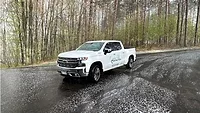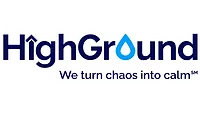RIA Adds Standard Development to Portfolio of Services

The Restoration Industry Association has added standards development to its efforts to strengthen and educate the cleaning and restoration industry.
In 2008, RIA introduced its specialty rug cleaning standard, Industry Guide and Recommended Practice for Rug Cleaning. This document, created and written by a special task force from RIA’s rug, carpet and textile division and peer reviewed by an additional group of specialty rug cleaning professionals, addresses topics such as pre-cleaning; dusting or dry soil removal; cleaning chemistry; cleaning and rinsing; grooming or finishing; drying; correction procedures; post inspection and quality control, and finishing for specialty (e.g., Oriental, Navajo, etc.) area rugs.
The standard “outlines step-by-step procedures and actions that constitute recommended professional practices covering all aspects associated with the cleaning of area rugs, including specialty and Oriental rugs.” Its purpose is to educate rug cleaners and outline “the full complement of procedures that apply to this professional and specialized endeavor.”
Copies of the standard are available from RIA by visiting the website at www.restorationindustry.org or calling 443-878-1000. Every individual who cleans carpets or specialty rugs should have a copy for their technicians to reference on the job, and every retailer should be familiar with it so they know who’s taking care of the products they sell and how they will be cleaned and maintained after they leave the showroom floor.
Like any standard, it’s a living document that will continue to evolve as techniques and textiles change in the future. However, as a resource, it illustrates to customers and clients that a company values education and doing things the right way each time it services their carpets.
Fire and Soot Damage Standards
RIA is currently in the process of developing two fire and smoke-related standards. The first standard, RIA/IESO Standard – 01-2008: Evaluation of HVAC Interior Surfaces to Determine the Impact from Fire-Related Particulate, is being developed in conjunction with the Indoor Environmental Standards Organization (IESO). A subcommittee of IESO has been working on the standard for approximately 18 months. It has been reviewed by the IESO Consensus Body and those comments are currently being reviewed and addressed.
Another RIA subcommittee of IESO will begin work on a major fire damage restoration standard early this spring. Development of the fire standard will require the support and commitment of many volunteers and the process is expected to take 2-3 years to complete because of the complexity of the document.
The standard will cover inspections, structures, pack-outs and inventory, personal property restoration, cleaning techniques and technology, building restoration, and a host of other related topics.
RIA is actively soliciting volunteers from the industry who would be interested in serving on the development subcommittee and have expertise in dealing with fire damaged structures and contents. Interested individuals should send an e-mail to info@restorationindustry.org with the subject line: RIA/IESO Fire Damage Standard.
Standards play an important role in complementing other existing documents to comprise an industry standard of care, provide guidance in situations that often encompass a variety of variables, help to ensure that contractors are using the most current knowledge available, and protect the clients and consumers being served. RIA’s role in the process is just a further example of its commitment to “Make it better” for all in the restoration industry.
Looking for a reprint of this article?
From high-res PDFs to custom plaques, order your copy today!






